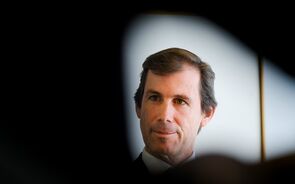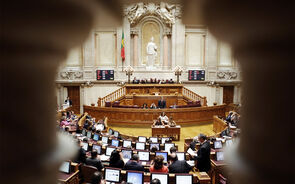The dollar is the new yen
2 mensagens
|Página 1 de 1
Why dollar carry trade faces hidden dangers
By Aline van Duyn, US markets editor
Published: November 6 2009 19:49 | Last updated: November 6 2009 19:49
Most investors agree that it is out there. What is less clear is how big it is, or how worried investors should be about it.
The “it” in question is the dollar carry trade. This is an investment strategy that has recently been extremely profitable and as a result has become increasingly popular.
It works in quite a simple way. Investors, such as hedge funds, borrow money in dollars for short periods and pay the low interest rates available in the dollar market. This money is used to buy assets with higher yields, ranging from other currencies where interest rates are higher to oil, commodities, emerging market stocks and bonds or corporate equity or debt. This strategy can create profits from two sources: the returns on the assets that are bought, plus the gains locked in from shifts in the currency in which investors borrow. It can also affect the value of the currency in which borrowing takes place: in order to buy, say, Brazilian stocks, investors have to sell the dollars in which they have borrowed.
It is well-trodden path. For years, investors had borrowed cheap money in yen. The unwinding of the yen carry trade last year, as the value of the yen shifted and became volatile in the midst of the financial crisis, had knock-on effects on many markets as positions were liquidated.
This week, the carry trade debate was catapulted into the limelight by Nouriel Roubini, professor at New York University’s Stern School of Business. In Monday’s Financial Times, Mr Roubini argued that the availability of cheap funds in the dollar market had fuelled a bubble in risky assets. It was the one of the most popular articles on FT.com.
“This unravelling may not occur for a while, as easy money and excessive global liquidity can push asset prices higher for a while,” wrote Mr Roubini. “But the longer and bigger the carry trades and the larger the asset bubble, the bigger will be the ensuing asset bubble crash. The [Federal Reserve] and other policymakers seem unaware of the monster bubble they are creating. The longer they remain blind, the harder the markets will fall.”
This view has plenty of critics, not least a raft of investors who believe that there is still value to be had in stocks and other assets. Values have surged, but that does not mean there are bubbles, they say. For example, the S&P 500 stock index was up nearly 60 per cent since its low in March, but that was similar to where it was a year ago and more than 30 per cent below the peak reached in October 2007.
There is, however, evidence that investors are placing increasingly similar bets. Dean Curnutt, president at Macro Risk Advisors, says correlations – which measure the extent to which prices move in tandem – have risen starkly. The correlation between the dollar and a range of assets including bond spreads, emerging market debt, oil and the S&P 500 was over 50 per cent in September and October, from about 30 per cent between January and September. “It tells me that all assets are driven by the giant dollar carry trade,” Mr Curnutt says.
Having seen other carry trades unwind, Mr Curnutt says the main lesson is that it can end quickly. However, as with the yen trades, it is difficult to grasp how big they really are, relative to other types of investments.
This is where the broader picture becomes important. It is not just investors driven by short-term mathematics that are shifting out of dollars and into, for example, Brazilian stocks. Such flows from mutual funds, owned by wealthy individuals, have soared and reached records this year. These are not likely to reverse if US interest rates rise so much that the dollar “carry” becomes to expensive, says Richard Madigan, chief investment officer at JPMorgan Global Access Portfolios, part of the bank’s wealth management business.
“Carry trade implies a tactical investment where the funding source matters a great deal, both its cost and relative stability,” says Mr Madigan. “I would argue both with retail and institutional investors in the US, the discovery of an investment world offshore has to a large degree been strategic.”
If there is a reason the dollar carry trade becomes unprofitable – such as a rise in US interest rates or bond rates – the interplay between the different types of investors will be key.
“The recent market buoyancy is driven by momentum traders and professional traders; it is not sustainable in the view of many investors,” says Amin Rajan, chief executive of Create Research, which analyses investment strategies. He says longer-term investors are holding a lot of cash that many have not yet invested in stocks or other assets. “The real danger is if these investors lose their nerve. Much now depends on whether the carry trade can continue for a long enough period so that long-term buy-and-hold investors can put more money into markets.”
http://www.ft.com/cms/s/0/760106de-cb07 ... ck_check=1
The dollar is the new yen
The dollar is the new yen, from which investors are still cutting their losses.
Not much has changed since we last spoke. I'm just sitting tight vacationing in the US with my assets in dollars. Everyone is negative on the dollar, for good reason, but that fact alone could, and I think will, propel the dollar higher at some point in nasty fashion.
Just look what happened to the yen. Everyone was negative on it for the same reasons and everyone was borrowing in yen to buy risky assets. Of course they took huge currency risk in doing so and thus paid the price. They're still counting their losses.
So now, in my opinion, it’s the dollar's turn.
Speculators are borrowing dollars (short) to buy risky assets and loving it right now. Everyone thinks the Federal Reserve is going to keep printing and printing until the dollar goes to zero. The problem with that is the Fed right now can't print enough, that is to say, it can't create enough credit. It's trying as hard as it can, believe me, for that is what it does, but without a fractional banking system willing to lend, it's impotent.
One way the Fed can print money/extend credit could be in a very devious way.
Many are marveled at the boom in stocks, given really rotten fundamentals. Of course, so far it's been a function of a lower dollar and there's a way to "reflate" with those printed dollars that normal conduits won't allow.
What if the government/Fed realized the most efficient way right now to "print" dollars and "reflate" the economy was to get stock prices up? What better way to do that than print dollars to buy stocks?
There's ancillary evidence that stocks are acting "artificial". Stocks aren't only climbing a wall of worry, they're scaling the Mt. Everest of bad fundamentals. Tick data is extreme, especially when the stock market is down. We constantly see 1000+ tick prints when stocks are down; this is very strange indeed. Volumes are down at least 20% from normal levels (and much more if you discount for high-frequency trading), making it easier to get stocks up.
Under TARP, the fine print allows dealers to REPO stocks to the Fed as collateral (holy cow is right).
What if there were an arrangement where large dealers buy stocks and stock futures through the day and REPO them to the Fed at the high closing prices? The dealer would book the profits derived from the difference at no risk.
If you look at the trading patterns of the largest dealers, one in particular lost money trading in only one day last quarter. Statistically that's like finding a needle at the bottom of the ocean.
Of course no one knows for sure because no one is allowed to see what's on the Fed's balance sheet. But more and more of us are suspecting it's not just the normal junk people talk about.
There was a good editorial in the Wall Street Journal describing the government’s and the Fed’s involvement in the financial ponzi scheme that has accumulated over the years. I believe it disingenuous for the government to persist in covering up its complicity by doing more of the same. They seem intent on bankrupting the country instead of steering clear of gobbledygook economics.
This won't work in the long run and only serves to increase risk.
Risk is very high
http://www.minyanville.com/articles/dol ... from/yahoo
2 mensagens
|Página 1 de 1
Quem está ligado:
Utilizadores a ver este Fórum: Ano nimus, Ferreiratrade, Google Adsense [Bot], hugob0ss, Kury Yozo, latbal, Lisboa_Casino, m-m, Masterchief, Mmmartins, MR32, Nuno V, nunorpsilva, O Magriço, PAULOJOAO, PIK, trend=friend, yggy e 101 visitantes


